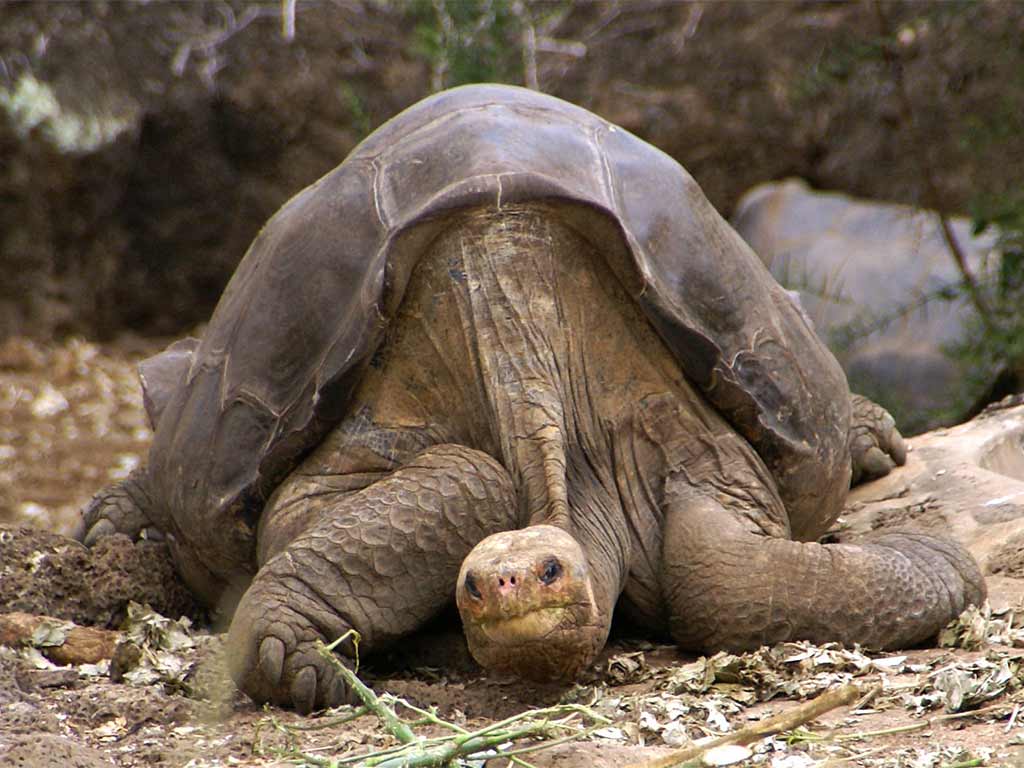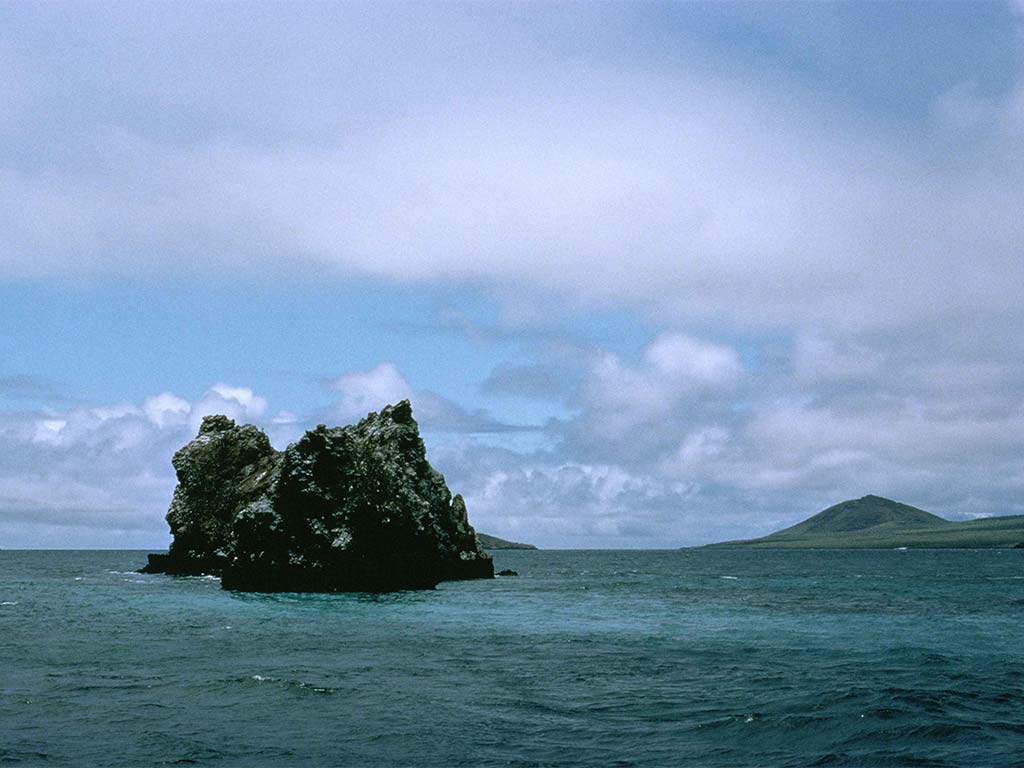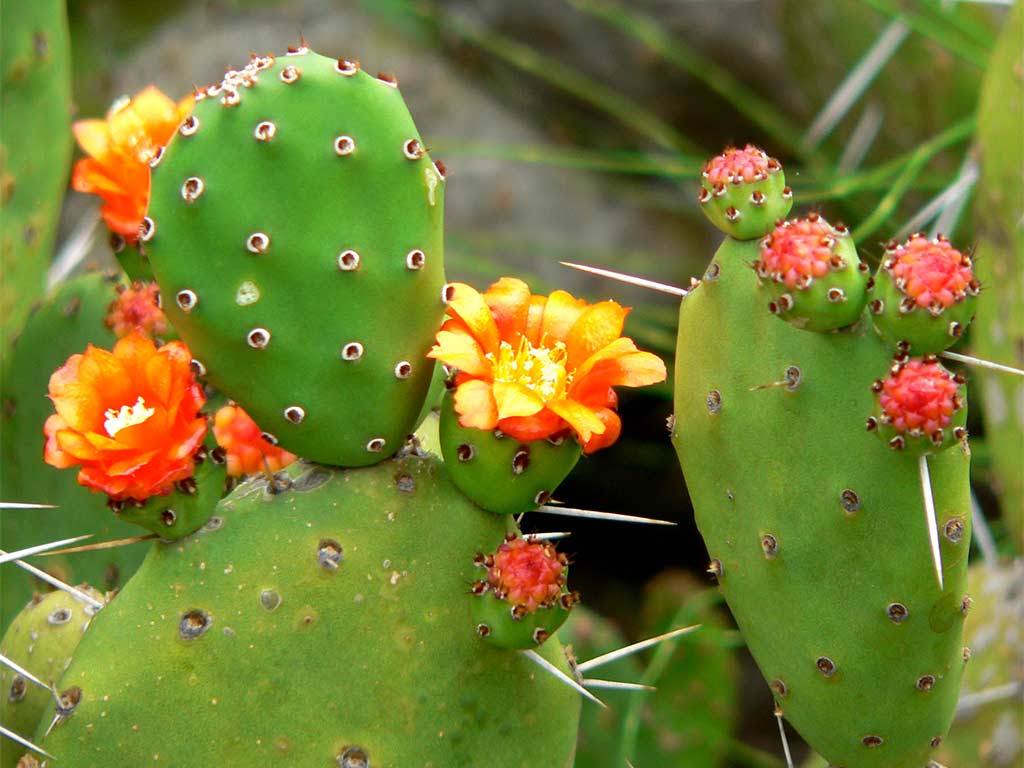Wolf Volcano Expedition

The 2015 Expedition to Wolf: A First-Time View of Galapagos
January 11, 2016
By Jane Braxton Little, writer and photographer.
A giant tortoise is bigger than a bale of hay and moves at the pace of its proverbial racing ancestor. Why is finding one so hard? I am thrashing through the thickets of lower Wolf Volcano, flailing at vines with three-inch spines and trying to keep up with Secundino Masaquizo, a wiry Galapagos National Park mariner. He has an uncanny ability to locate stable footing on the wobbly lava and slip unscathed past plants that seem bent on grabbing me. I concentrate on keeping him in sight — more as a survival tactic than a hedge on finding a tortoise. I am a journalist, lured to this wild and remote corner of the Galapagos Islands by an unprecedented scientific commitment to recover Pinta and Floreana giant tortoises, both officially extinct species. As a first-timer to Galapagos, the odd and utterly unfamiliar flora and fauna I confront on this initial day of exploration seem more weird than wonderful. Every plant has something to offer, and for me, an invasive species, none of the hand-outs is hospitable. The first land iguana I startle is more frightening than fascinating. And why are all the tortoises so elusive?
Even knowing in advance what I learned in those first four hours on Wolf would not have deterred me. When Linda Cayot, Galapagos Conservancy's Science Advisor, contacted me about this 10-day expedition I was in the midst of writing about the sixth mass extinction. Who wouldn’t augment that reality with a chance to participate in an extinct species restoration project? So day after day I gladly scramble across the lava following James Gibbs, a soft-spoken professor of conservation biology and science partner with the Galapagos Conservancy whose passion for reversing tortoise extinction inspires this expedition. Ahead of me I can hear the fetching Italian accent of Gisella Caccone, a Yale geneticist who has devoted decades to uncovering the DNA footprint of Galapagos tortoises. And there's no mistaking the booming voice of Joe Flanagan, chief veterinarian at the Houston Zoo, who combines extraordinary knowledge of Galapagos species with a particular devotion to giant tortoises.
I am crawling through thorny tortoise tunnels with the species’ most dedicated scientists. If only we could find just one of the wily reptiles! That afternoon we are rewarded on board Sierra Negra, the Galapagos National Park ship that has brought us to Wolf. The first of 32 tortoises found by other field teams, combing higher on Wolf's volcanic flanks, arrives on board by helicopter. James, Gisella and Joe work with impressive efficiency, turning the deck into a makeshift science lab where they label, measure and take blood samples for later genetic analysis. These tiny drops in a tube will measure the success of the expedition, and may ultimately determine the future of the Pinta and Floreana giant tortoise species.
My second morning’s search on Wolf brings the thrill of discovery: our group’s first giant tortoise. James yells, "Tortuga," quickly muttering "don't get your hopes up." A tortoise the size of a salad plate is hunkered on a smooth sheet of lava scattered with dried leaves. It is too young to determine its gender or whether it will develop the flared carapace typical of Pinta and Floreana tortoises. Still, I am elated, knowing that this youngster all alone in this harsh place could be related to Lonesome George or the even longer lost Floreana tortoises. Over the next six days we find many small tortoises among the scrub. They transform my perception of Wolf’s lower arid slopes. Beneath the brush I begin to see mats of moist soil that sound hollow when I thump them: nests dug by females laying their eggs in these lowlands before moving upslope. Soon I see nests everywhere; it’s like learning a new word. These unstable piles of lava, those ankle-grabbing vines and arm-stabbing thorns are protecting a gigantic tortoise nursery. What seemed hostile to me represents safety for tortoises by evolutionary design. Here the second cousins of Lonesome George will hatch; some will survive to mature and eventually mate. A few may play their part in restoring the species of their ancestors.
I leave Wolf Volcano grudgingly, reluctant to relinquish the grip of this place so exquisitely suited to perpetuating the creatures that have found their way here. Before stepping through the fringe of mangroves to the lava-strewn beach, I do a surreptitious bow: To the tortoises that promise the hope of restoring extinct species; to the habitat that nourishes them; and to the scientists devoted to their conservation./p>
Jane Braxton Little writes about science and the environment from California's northern Sierra Nevada. Her work has appeared in Scientific American, National Geographic, Discover and Audubon, where she is a contributing editor.

The 2015 Expedition to Wolf: A Return to Galapagos
January 8, 2016
By Milton Yacelga, co-founder of Kaminando: Habitat Connectivity Initiative.
Returning to the Galapagos Islands is always a privilege, and even more so if you are a biologist. My professor once said: “As a biologist, if you have not visited the Galapagos, you are not a biologist.” Though a strong statement, I know what he meant: the Galapagos Islands are a spectacle of nature; they inspired Charles Darwin to conceive of his groundbreaking theory of natural selection more than 180 years ago. It’s a place that does not fail to amaze everyone, biologist or not, when they visit. I have been fortunate to come to the Islands numerous times. Initially I was a student volunteer, assisting scientists in the study of sea lion vocalizations. Later I returned with a scholarship for Ecuadorian students working in herpetology to study the survival of hatchling marine iguanas on a populated island. During this time, I had the opportunity to work with remarkable scientists in different fields, expanding my knowledge and my understanding of the fragile Galapagos ecosystem.
Returning to the Islands to join a research group after 20 years, marked by the age of my son Adrik, was exciting and in many ways felt new again. However, I also thought about the people I knew there, and the changes I’ve seen over the years. I searched for old friends and former colleagues to recount stories, because Galapagos has been such an important personal experience for me. As a research destination, Galapagos always delivers. During the Wolf expedition, I heard first-hand about the discovery of the pink iguana (Conolophus marthae) living on the slopes of Wolf Volcano on Isabela Island. I learned about a new species of tortoise (Chelonoidis donfaustoi) in Cerro Fatal, Santa Cruz Island, and the exciting news that for the first time in 100 years baby tortoises were born naturally on Pinzón (Chelonoidis duncanensis). I also found out about the slow process of recovering the mangrove finch population after the devastating effects of introduced black rats and parasitic flies (Philornis downsi). All of these represent hope and concern at the same time.
On this trip I joined the tortoise research expedition to Wolf Volcano, organized by Galapagos Conservancy and the Galapagos National Park Directorate. These two organizations have developed a plan for “restoring the giant tortoise dynasty in the Galapagos.” The expedition was led by a good friend of mine, Wacho Tapia, who had completed his thesis work on giant tortoises in the 1990s, at the same time that I was studying marine iguanas. From the moment we embarked on the Sierra Negra on November 18, 2015, my sense of wonder increased. Onshore we had the possibility of finding a tortoise that could be related to Lonesome George, the last Pinta Island tortoise whose death marked the first extinction in Galapagos in the 21st Century. If we could find several tortoises closely related to Lonesome George, the Pinta legacy would survive — the extinction of this species could be reversed!
During our eight-day search, walking in sometimes-dense vegetation up to nearly two miles to altitudes of about 1,600 feet in constant rain, we noticed what Darwin observed during his encounter with the tortoises. “When thirsty, [tortoises] are obligated to travel from long distance. Hence broad and well-beaten paths branch off in every direction [to] from the wells.” We followed similar pathways alongside our designated transects and found them, sometimes in groups up to 30 individuals. As Darwin remarked, “the tortoises were very fond of water.” Some of the individuals we encountered are hybrids between the Wolf tortoise species (Chelonoidis becki) and the extinct species from Pinta and Floreana Islands. Galapagos is a global treasure that survives in challenging times. For these tortoises, the Giant Tortoise Restoration Initiative is critical for their survival. It is up to us — researchers, tourists, and island residents — to spend time and effort to conserve these species.
“Yea, I shall return with the tide.” –Kahlil Gibran
Milton Yacelga is a native of Ecuador with a background in animal behavior, particularly reptiles (snakes). He is a co-founder of Kaminando: Habitat Connectivity Initiative, which aims to preserve the cloud forest, a rare and endangered ecosystem in Panama. Milton completed his thesis on Galapagos marine iguanas in the early 1990s under the supervision of Dr. Linda Cayot.

The 2015 Expedition to Wolf: A Pinta Perspective
December 30, 2015
By Elizabeth Hunter, PhD candidate at the University of Georgia.
Almost all of my experience in the Galapagos has been on Pinta Island, where I spent a total of four and a half months studying the group of 39 sterilized hybrid tortoises released there in 2010. Pinta Island is very special to me, so I was delighted when the Galapagos Conservancy invited me to participate in this unprecedented expedition to Wolf Volcano to recover the Pinta tortoise species and continue the restoration of the island.
Upon arriving on Wolf, my initial perception was that it was similar to Pinta. We landed on a small beach surrounded by a thicket of mangroves, and then walked across a lava field and through spiny shrubs and palo santo trees to get to our campsite nearly a mile from the coast. All of these features were reminiscent of Pinta: the aromatic scent of palo santo in the air, the crunch of lava underfoot, the sounds of Darwin’s finches and mockingbirds.
As we began to search for tortoises the next day, however, it became apparent that something was missing: the giant arboreal Opuntia cactus. This cactus is numerous on Pinta and drives much of the behavior of saddleback tortoises. On arid islands, the cactus is often the only reliable source of water for tortoises and other animals during periods of drought. In the low arid zone of Wolf, however, I found very few cacti, with only a few small individuals scattered around a landscape of densely packed shrubs. I felt the absence of the cactus keenly as we covered new ground each day, and I was constantly struck with the idea that the saddleback tortoises that we found do not belong in this cactus-less landscape.
I was lucky, though, to be assigned to a search zone encompassing a feature that does play a substantial role in the behavior of the giant tortoises on Wolf Volcano. A small canyon, perhaps 30-50 feet deep at parts, cut through the center of our search zone, running more than a half a mile down slope. Here the lava rock is transformed from jagged heaps to a consolidated, smooth flow. We stumbled upon the canyon at the end of our first day of searching and found several tortoises there, all sitting motionless under deep shade, seemingly waiting for something.
The true importance of the canyon did not reveal itself to us until the third day. It rained heavily through the second night and continued into the following day. Pools of water collected in small crevices and bowls in the lava, and as we approached the canyon we were struck with the sight of dozens of tortoises congregating there. They jostled for position at the small, muddy pools where they thrust their faces into the water and drank deeply until the pools ran dry. It was an incredible sight to behold and somewhat overwhelming, as we rushed to measure, mark, and collect blood from as many tortoises as we could before they had drunk their fill and returned to the brush outside the canyon.
It was a long day in the rain, and as we walked back down the canyon to camp, we encountered another saddleback tortoise new to the scene. I scanned the tortoise’s leg for a PIT tag (microchip), and a number popped up on the screen. My heart was racing as we searched the list for a match, and there it was: a Pinta tortoise! (That is, one of the 17 known hybrids with Pinta genes.) There were high-fives all around, and I felt an unimaginable thrill at seeing this descendant of wild Pinta tortoises — a once-in-a-lifetime feeling. I was struck with gratitude for all of the time, effort, and resources from the Galapagos Conservancy and the Galapagos National Park Directorate that it took to arrive at such a triumphant moment. I am also grateful for all the hard work of my excellent teammates: park rangers Milton Calva and Alexis Tualombo, and evolutionary biologist Nikos Poulakakis. I have no doubt that without the tireless tortoise-tracking skills of Milton, our group leader, we would not have brought back as many tortoises to the Santa Cruz Tortoise Center as we did.
There was only one other confirmed tortoise with Pinta ancestry found during the trip; luckily it was a male, and ours a female. So we now have the foundation for a species reconstruction program. Hopefully, some of the other saddleback tortoises collected during the Wolf Expedition will also have Pinta genotypes, and a robust population with genetic variability can be created for release on Pinta Island. In our small canyon, we found some of the highest densities of saddleback tortoises on the volcano. I couldn’t help wondering what Pinta would be like with so many tortoises roaming its slopes. Though it has no similar canyon where water collects, drawing hundreds of tortoises after a rain, I could imagine an extensive network of tortoise trails through the woody shrubs connecting the water-giving Opuntia cacti. I look forward to the day when the descendants of these now captive saddleback tortoises will return to their home island — Pinta — and restore their ancient connections with the ecosystem.
Elizabeth Hunter is a PhD candidate at the University of Georgia, and has contributed to tortoise research and ecosystem restoration on Pinta and Española Islands. She completed her MSc on the 2010 tortoise release on Pinta at SUNY with Dr. James Gibbs.

Comments